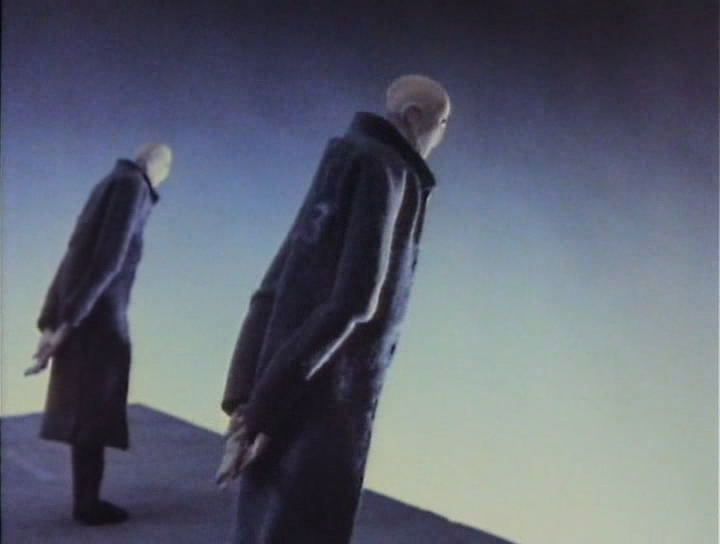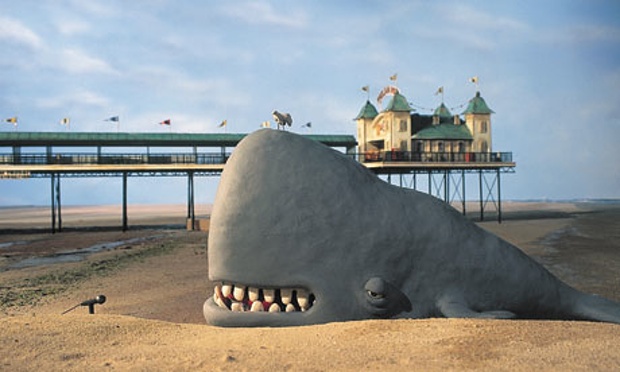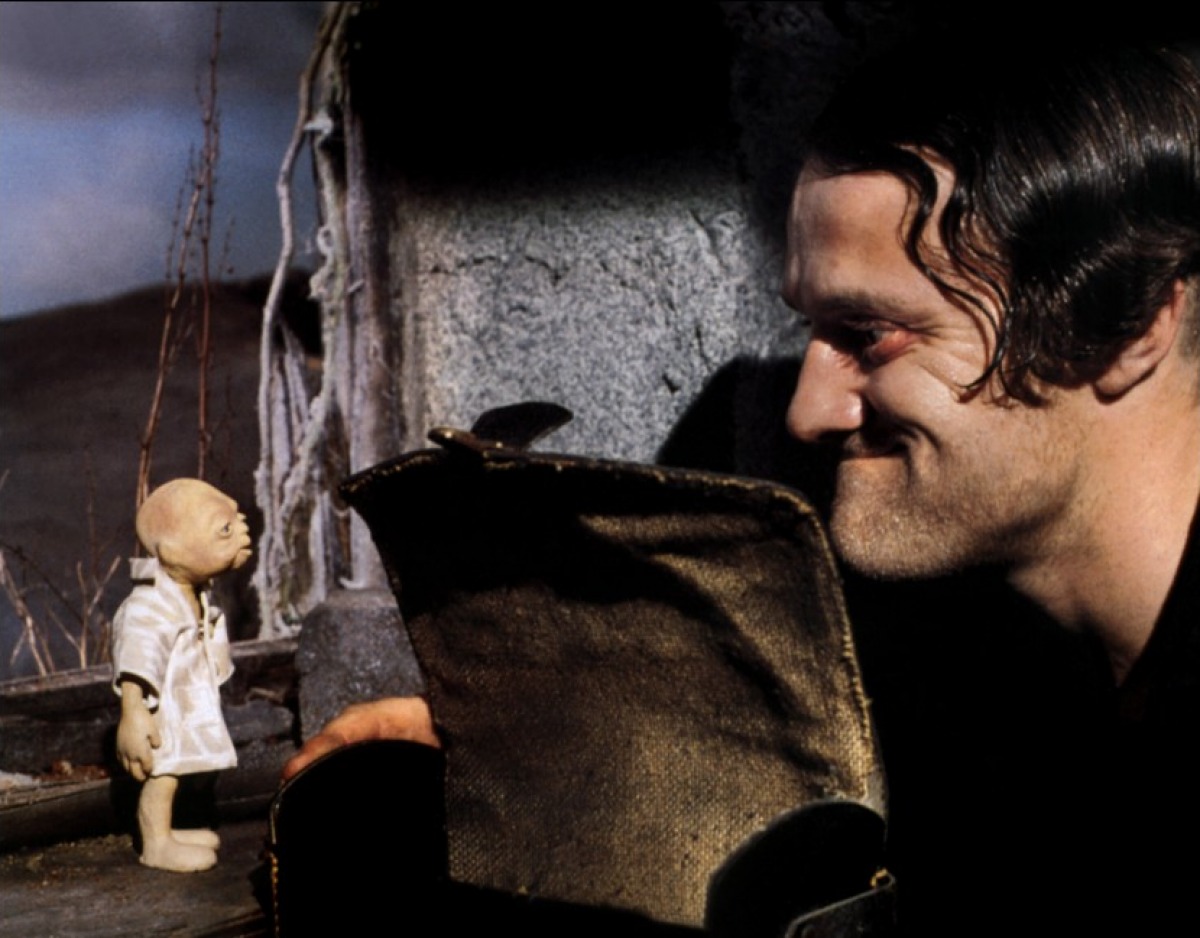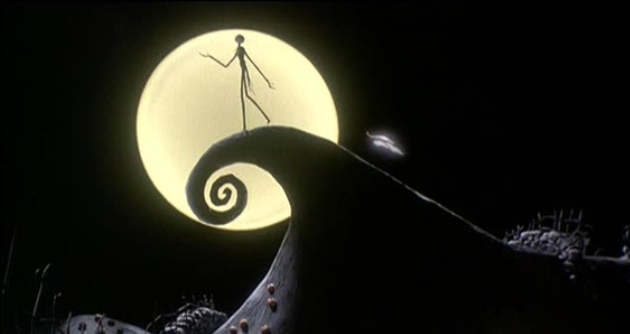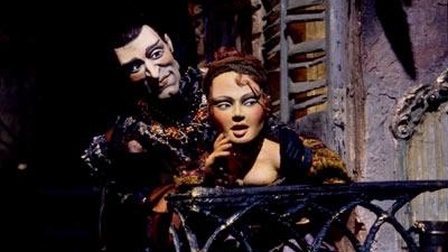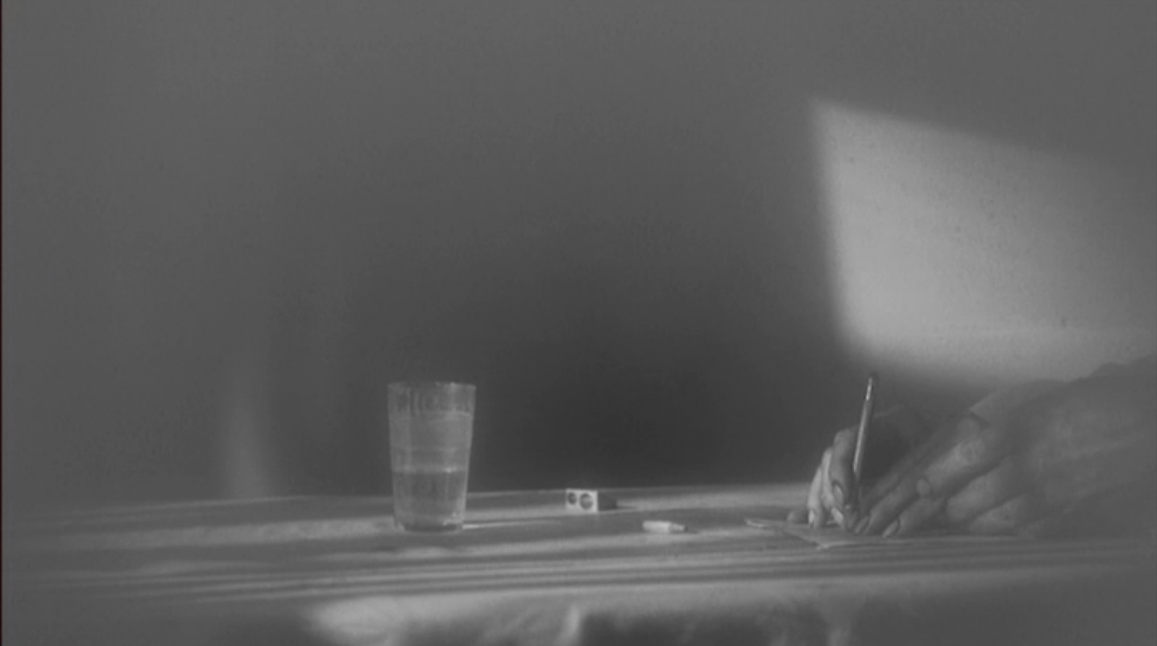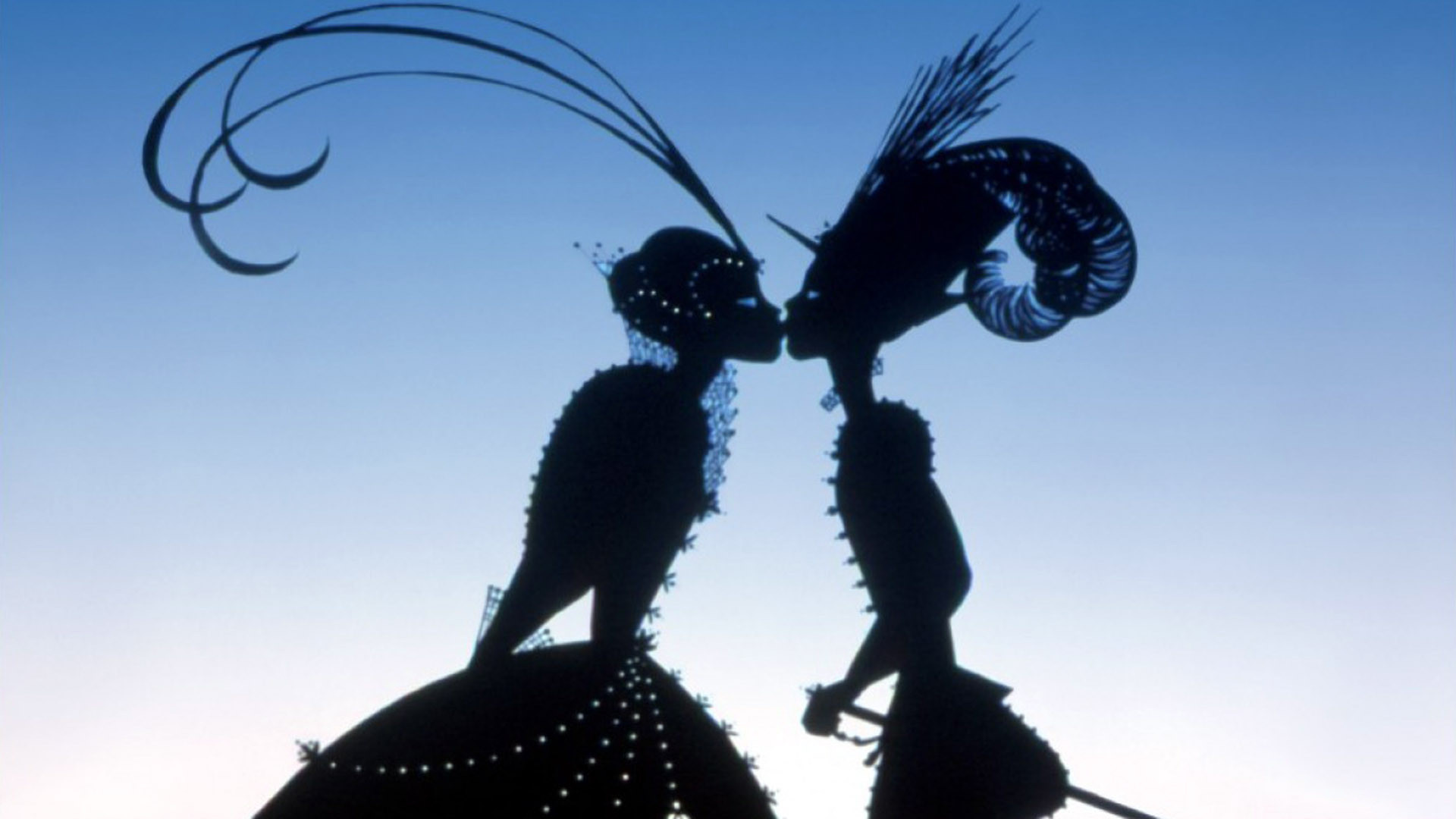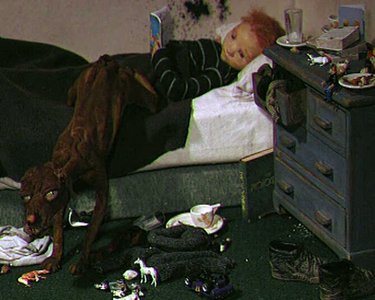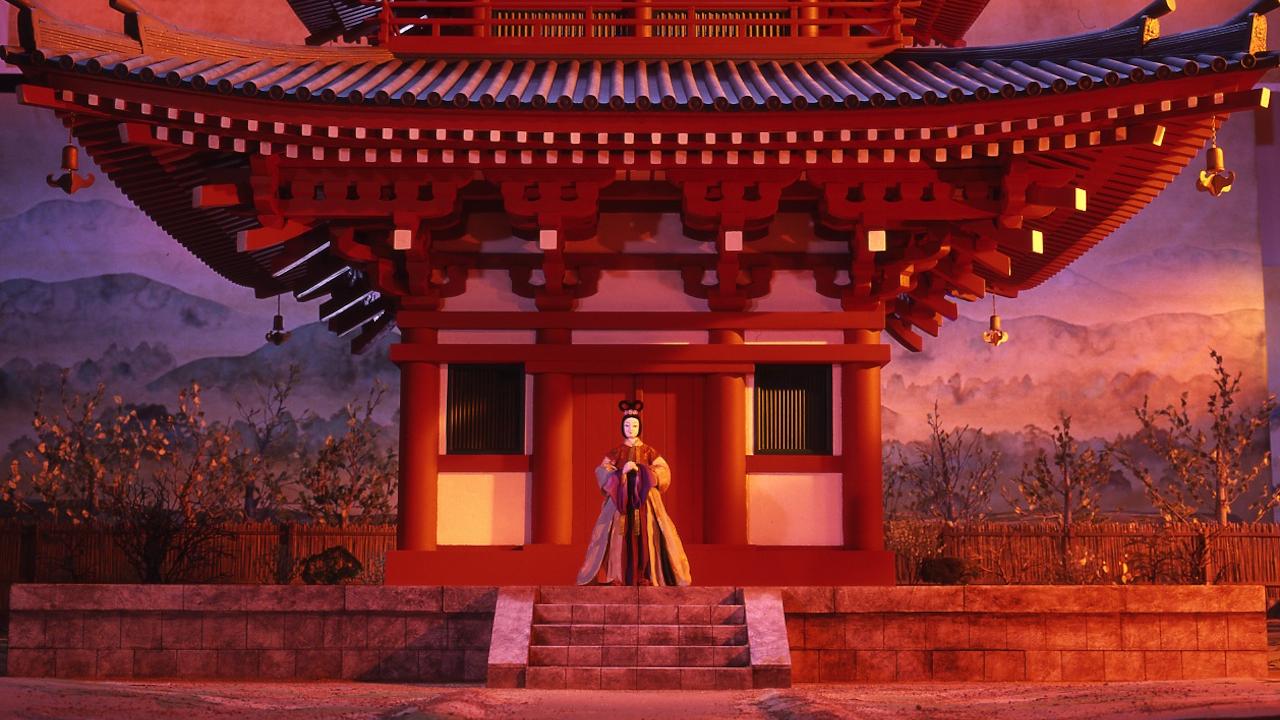21. Balance (1989). Dir. by Wolfgang and Christoph Lauenstein. Germany.
This Oscar-winner is a minimalist masterpiece. Recalling German expressionism, it tells a cautionary tale of five Nosferatu-like figures on the platform suspended in the sky, and what happens when an object that can only be possessed by one of them is introduced into their precarious world.
22. Creature Comforts (1989). Dir. by Nick Park. UK.
Aardman Studio’s works are unmistakable in look. This one is included here over the better-known ones as the one that started it all. A 5 min. short about zoo animals being interviewed on their life in captivity launched the now famous studio specializing in Claymation creatures with large mouth and unmistakably British teeth (an humor as well).
Other works: for those who haven’t yet, all Wallace & Grommit films. Creature Comforts was developed into TV series in 2003, also worth checking out.
23. The Secret Adventures of Tom Thumb (1993). Dir. by Dave Borthwick. UK.
Though based on the fairy tale, this isn’t one. A fetus-like Tom Thumb is surviving in a squalid and menacing urban jungle, trying to make it back to his parents by the way of an experimental laboratory and other hostile locales. This feature is largely wordless, and the human actors move like animated characters as well. As stated before-this is no fairy tale.
24. Tim Burton’s The Nightmare Before Christmas (1993). Dir. by Henry Selick. USA.
There is a reason why Tim Burton’s name is in the title, even though he didn’t direct it-it is his work. Not much new can be said about this cult staple, other than the fact that it gave stop-motion a new lease on life and successfully affected mainstream audiences with its spirit as Jack Skellington did with his macabre presents, and re-defined the term “Holiday special”.
The story of Jack Skellington taking over Christmas, the fantastically hand-crafted world he and company inhibit, and the musical numbers by Dany Elfman are here to stay.
Other works: also need no introduction. James and the Giant Peach (another Selick/Burton effort), Burton’s own Corpse Bride and Frankenweenie-we’re lucky to have them in our multiplexes.
25. Rigoletto (1993). Dir. by Barry Purves. UK.
Britain’s premier stop-motion talent contributes this half-hour short to Operavox animated series, and it is the best of them all. The tale of passion and murder in Mantua is exquisitely made and flawlessly presented.
Other works: the shorts Next (1990) and especially Screen Play (1993).
26. In Absentia (2000). Dir. by The Quay Brothers. UK.
One of the most deep-cutting films out there, stop-motion or otherwise. Here, stop-motion is used to bring the “art of the insane” to life. The protagonist is a woman in an insane asylum, writing letters to her absent husband. Pencil leads come to life, lights flicker in and out, and the specter of her malady is ever-present.
The jarring music by Karlheinz Stockhausen combines with the imagery to give, perhaps, the most vivid illustration of mental illness in all of cinema.
Other works: Many to choose from. Stephen and Timothy Quay have been making striking stop-motion works since late 70’s. They were also animators on Peter Gabriel’s legendary “Sledgehammer” music video and contributed animated sequences to Frida (2001).
There are many short works to choose from: Street of Crocodiles (1986), The Cabinet of Jan Svankmajer (1984), Stille Nacht shorts (1990-1993). Their live-action features, Institute Benjamenta (1995) and The Piano Tuner of Earthquakes (2005), are, essentially, extended version of their shorts, and offer an unforgettable visual experience.
27. Princes and Princesses (2000). Dir. by Michel Ocelot. France.
This is really the early 90’s TV series Cine si (1989), compiled into a feature after other films by director achieved success. Recalling Lotte Reiniger’s silhoutte films, Ocelot here presents tales from Europe, Egypt, Japan, and the future. Like all of Ocelot’s works, the form and the content combine almost perfectly.
Other works: not to be missed are the silhouette Tales of the Night (1992/2011), digital ink/paint Kirikou and the Sorceress (1998), and the computer-made Azur and Asmar (2006), among others.
28. Aria (2001). Dir. by Pjotr Sapegin. Norway.
A 10-minute adaptation of Puccini’s “Madame Butterfly”, this gem strips the story to its bare essence. Warning: not for children, as it features puppets consummating their love and extreme postmodernism.
Other works: Residing in Norway, Sapegin (formerly a set decorator at Bolshoi Theatre in Moscow) has made a number of artistic and innovative shorts, with both puppets and claymation. Of note are Mons the Cat (1995), One Day a Man Bought a House (1998), Through My Thick Glasses (2004).
29. Dog (2001). Dir. by Suzie Templeton. UK.
A heart-wrenching 5 minute short on a family going to pieces from grief. The puppets manage to be both realistic and grotesque, and the hyper-realistic sounds contribute to the understanding of the debilitating grief. Be forewarned, this one will stay with you for a while.
Other works: see both of them. Stanley (1999) is only 7 minutes long, and 2006 Academy Award-winning Peter and the Wolf clocks in at about 35 minutes.
30. The Book of the Dead (2005). Dir. by Kihachiro Kawamoto. Japan.
In the empire of anime, Kihachiro Kawamoto stood out as a giant of stop-motion. Relying on both the traditional Japanese bunraku puppetry and European stop-motion school (he studied with Trnka), his creations are the best of both worlds. The Book of the Dead is the last work he made in his life and is his crowning achievement. The spirit of Buddhist teachings dealing with the afterlife is perfectly presented in this refined work. The design is second to none.
Other works: several amazing shorts-The Demon (1972), Dojojo Temple (1976), House of Flame (1979), as well as the cutout The Poet’s Life (1974). A compilation film Winter Days (2003) is not to be missed, it features short segments made by Kawamoto and 35 other directors.
